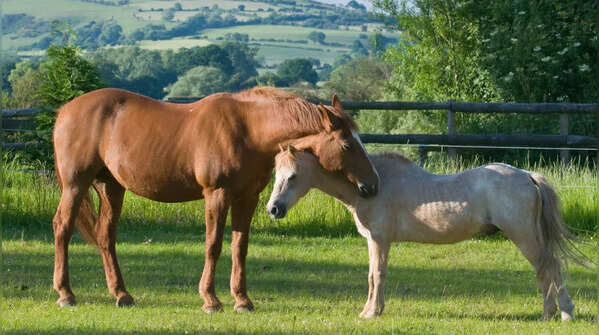7 animals that sleep while standing

7 animals that sleep while standing
Most of us associate sleep with curling up in bed or finding a cozy spot to rest. But in the animal kingdom, not everyone has that luxury or even that preference. It might be surprising to know but it is true that some animals sleep while standing not out of shortage of space but because it is necessary for their survival. Whether it’s to stay alert for predators, to rest without collapsing under their own weight, or simply because lying down isn’t practical, these creatures have evolved unique ways to doze off on their feet.
Sleeping upright might seem uncomfortable or even impossible for humans, but for many animals, it's built into their biology. Some species have well modified joints and locking mechanisms in their legs that keep them upright without using much energy. Others keep switching between light dozing and having a deeper sleep and are always ready to react at a moment’s notice.
Here are 7 interesting animals that sleep while standing.

Elephants
Elephants, especially in the wild, often sleep standing up for short periods. Due to their massive size, lying down for too long can cause pressure on their organs and limbs. They use brief standing naps to recharge while staying somewhat alert. However, elephants do lie down occasionally to enter sleep for rest and reset, but only for a couple of hours a day. Their standing slumbers are an adaptation to their environment and size.

Giraffes
Giraffes are among the lightest sleepers in the animal kingdom, averaging just 30 minutes to a few hours of sleep per day. They often doze while standing to avoid vulnerability to predators. This is due to their long legs and height, which make lying down and getting up a slow process. For deep sleep, they may occasionally lie down and curl their necks back, but they spend most of their resting time upright and alert.

Starlings and Pigeons

Flamingos
Flamingos can actually sleep while standing, sometimes even balancing on one leg which they are famous for! Their leg anatomy includes a locking joint that keeps them upright with little muscle effort and energy. Flamingos often sleep this way to conserve body heat and remain safe in shallow waters, where lying down isn’t possible. This standing snooze allows them to stay semi-aware of their surroundings while still catching some rest.

Zebras
Zebras, much like their equine cousins, can sleep standing up, using a similar leg-locking mechanism to stay balanced. Living in the African savannah among predators like lions means zebras can’t afford to be vulnerable for long. They often sleep in groups for protection, and their upright sleeping position allows for a quick getaway if danger approaches. Occasionally, zebras lie down for deeper rest, but standing sleep is their go-to for safety and convenience.

Cows
Cows frequently nap while standing up, particularly in open pastures where they need to stay vigilant. Like horses, they have a locking mechanism in their legs that helps them rest comfortably without collapsing. However, for deeper sleep cycles, cows do lie down—often in groups, which gives them a sense of safety. Their upright naps are usually light sleep, helping them stay on guard while conserving energy throughout the day.

Horses
Horses are famous for sleeping while standing because of a unique system of tendons and ligaments called the stay apparatus. This allows them to lock their legs in place, so they can rest without falling over. While horses do lie down for deeper REM sleep, who need to lie down to achieve rapid eye movement that is necessary for rest and recovery, they often nap on their feet to stay alert to predators. Their large bodies make it harder to get up quickly from the ground, so sleeping upright is efficient and safer.








